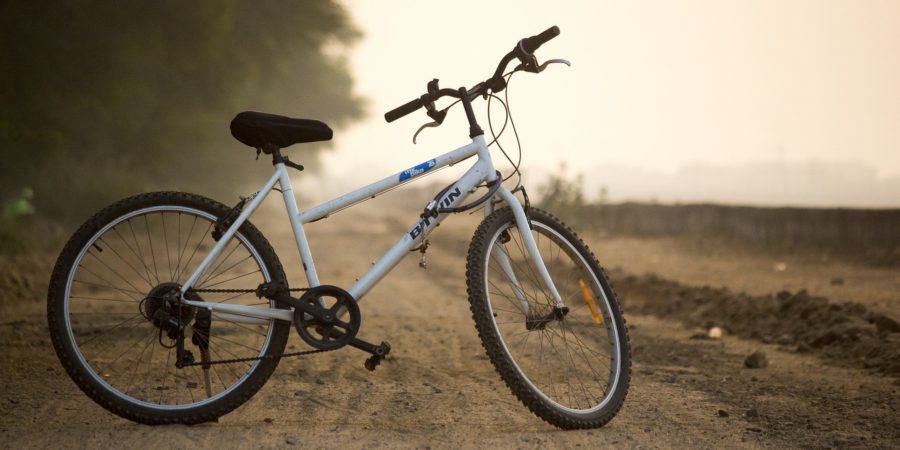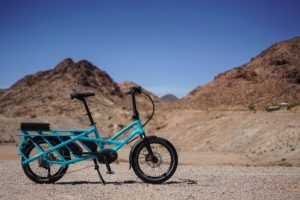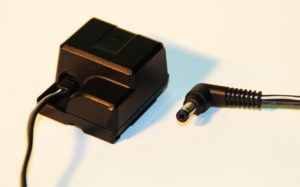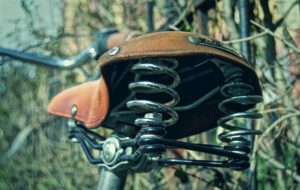This ultimate electric bike buying guide is all about purchasing the perfect bike for you!
We will not be covering building your own electric bike here.
However, keep your eyes peeled for an up and coming guide to build your own ebike!
If you have any unanswered questions by the end of this guide, feel free to shoot me a message. Either by contacting me directly or by leaving a comment at the end of the guide!
Table Of Contents
Why Buy An Ebike Anyway?
So why do we need the ultimate electric bike buying guide?
Well buying an ebike is all about flexibility.
Or it’s about money saving.
Possibly time saving too.
Throw in a little sprinkle of exercise.
Sometimes you just don’t want to tackle the hills.
There’s plenty of reasons to buy an electric bike, so find the reasons why you want to!
If you don’t want to bother with building your own, then this is the guide for you!
But of course, you’re reading the ultimate electric bike buying guide, so you must know you want one.
Let’s dive into the choices and considerations you have ahead of you.
Finding The Bike That’s Right For You
There’s so many different types of ebikes out there.
Ranging from beginner rider styles and power levels, to experienced cyclists who want to up the ante.
Knowing who you are, what your goals are and your preferences will help immensely when it comes to selecting the type of bike that’s right for you.
Read through these next few sections so we can narrow down the best choice for you.
Type Of Riding
What type of riding do you want to do?
Are you an avid mountain biker, or do you just like going on a Sunday cruise?
Do you want to commute to work every day on an ebike?
City Riding
You may consider designs such as dutch bikes or cargo bikes.
Dutch or cargo bikes are called city bikes, and are only useful in town areas.
Dutch and cargo bikes usually have a more upright position that feels natural and stress-free to ride on.
They are usually hub driven (more on that later), great for hauling luggage around town.
Common features include mudguards, baskets, swept back handlebars and plush seats.
Often they’ll also come with attractive looking designs, slick colour schemes and feel comfortable to ride.
Another aspect that may appeal to some people is that city bikes can often come in step-through frames. Making them easier to mount and dismount than other bike frame styles.
Cargo bikes are usually city bikes with longer wheelbases to handle more luggage space.
City bikes are however, pretty useless for long distances, going fast or climbing hills.
To get distance, speed and power you need to take a look at:
Commuting
Commuter bikes are essentially hybrid bikes that combine the best of city riding with trail or off-road biking.
If you love riding through nature on the weekends but also need to get to work on weekdays, then a hybrid bike may be the answer you’re looking for.
Suitable for longer fitness rides, these bikes have flatter handlebars and a more racy stance when mounted.
Often allowing the rider to go faster, they also have limited handling on pavement and are not equipped for heavy load carrying.
If your goal is to enjoy the best of city streets and the town trails, a commuter hybrid bike won’t let you down!
Mountain Biking
Yes! That’s right! You can combine your beloved mountain bike with the awesome power of an electric motor.
If your main goal is to hit the trails at speed then an eMTB (e-mountain bike) will set you up well.
With wide flat handlebars, front and sometimes rear suspension coupled with heavy duty disc brakes, you’re all set for a wild ride off road!
Knobbly tires are a staple of the mountain bike, which makes the bike a little less efficient for road riding. But grip on the loose gravel and dusty surfaces is greatly improved.
However, you can repurpose older mountain bikes into commuters, an example being my BBSHD mountain bike.
Some people may be selling these with more road-y tires.
Mountain bikes can be good for commuting as they’re very sturdy and offer a wide range of gears.
Folding Bikes
An unconventional model for an electric bike is the folding bike.
Folding bikes do what their name suggests – they can fold up!
These make them great for taking on a bus or train, or for storing at home or at the office.
Ebike motors and batteries add a significant amount of weight to any bike, and can make folding bikes unwieldy.
They’re normally very similar in style to the city bike.
Choosing The Motor
The motor of your ebike is probably the most important choice you’ll make.
There are a lot of factors that will help you decide on what motor will suit you best.
If you’re after something that can help you climb hills and go fast, then you might be best with a mid drive.
However, if you’re just wanting to cruise around town on the flat pavement then bikes with a hub motor would suit.
Mid Drives
A mid drive motor is one where the motor is mounted right near the pedals.
Usually the pedals are connected directly to the mid drive motor.
Mid drives use your existing drivetrain (chain and rear gears) to propel the bike. This does mean that you will be putting more wear and tear and stress on the drivetrain components than usual. You may need to replace your chain or rear gears more often in this case.
Essentially it’s a more powerful version of you!
Because mid drives use your gearing system, it makes it really easy to bike normally. This means you have lots of power and speed capability, depending on where you’re riding.
Mid drives are also mounted low on your bike, making it more stable and feeling more natural to ride. With the bonus addition of even weight distribution making it great for mountain biking purposes.
You’re most likely to be best off with a mid drive system if you’re mountain biking, commuting with hills, or like to go fast!
I imagine this encompasses 90% of people reading this guide.
However, if you’re dead set on a hub motor or you commute slowly on flat ground, read on!
Hub Motors
A hub motor is mounted directly in the centre of your wheel. These can be front or rear mounted. Although you’re more likely to see rear mounted hub motors due to their superior nature.
Hub motors are great if you’re after a really low cost option. These make the overall bike cost a lot less due to the hub being easy to make.
However, keep in mind that mid drive motors are also getting cheaper as they mature.
Hub motors are best installed in the rear wheel due to the power being applied there.
If you were to have a front hub motor, when applying power your front wheel can often lose grip with the ground. Not so good for regular riding.
Front hubs also make the front of the bike heavier, resulting in a more sluggish and less responsive feel in handling.
Rear hub motors can make the changing of the rear tire harder too. The motor increases the weight of the wheel significantly.
Getting The Right Battery For The Job
A battery is equally as important as the motor in your electric bike rig.
So choosing a bike with a battery that is suited to your riding is another important part of buying an electric bike.
For a head first dive into all thing batteries, check out my article here. The article is quite heavy on choosing a battery type, but is great for learning everything about batteries. From the terminology to the best types and what everything does.
If you’re just looking to purchase a bike with a battery already added, keep the following in mind.
You’ll want to make sure it’s a lithium-ion battery of some sort. These are the best for electric bikes as they work well with the intense nature of electric motors.
Ensure you have a battery that matches the voltage of your motor.
The most important part of the battery is usually choosing the capacity.
Capacity of batteries (as mentioned in my other article) is measured in watt-hours or Wh. The standard ebike user can expect to use 20Wh per 1km (0.62mi) travelled.
Of course this can wildly change depend on the type of terrain, tires, weather, slope, rider power, how fast you ride and many other factors.
However, we can expect an average of 20Wh per km (0.62mi).
To calculate our range we can divide our battery capacity by 20.
So a 400Wh battery can take us (400 / 20 =) 20 km (12.43mi).
A battery with 600Wh can take us (600 / 20 =) 30km (18.64mi).
Also keep in mind battery care when calculating range.
Battery Care Is Good
I personally charge my electric bike battery to 80% capacity and only discharge to around 20%.
This means I only have 60% of the entire capacity of my battery in normal everyday use.
So from my entire 650Wh battery, I use 390Wh for normal everyday biking. This gets me an average of 19.5km (12.12mi) per charge cycle.
Using your battery in this way makes it last much longer, meaning you have to replace your expensive battery less often. A win-win for your wallet and the environment!
Of course, if you are ever in a dangerous situation you can use the last 20% of your battery. Or even charge it to 100% very occasionally if needed. Just keep in mind that it stresses the battery and can quickly degrade it’s life, and hold less charge over time.
Battery Charging Care
Caring for your battery also comes into play when you’re charging it!
Lithium-ion batteries do not like to be warm. Being warm is a side effect of charging a battery quickly.
Charging your battery quickly can lead to degradation in its life and number of cycles.
Many chargers that come with your battery will only charge at a slow speed. My charger that shipped with my battery charges at 2 amps.
To calculate how quickly this will charge your battery, just follow along with my simple maths!
I have a 12.5Ah battery. If I charge it at 2A, 12.5 divided by 2 equals 6.25 hours!
You might also find battery chargers that can charge at 5 amps, whoa!
12.5 / 5 = 2.5 hours! Insane speed!
This is too fast for a small sized battery. A good rule of thumb is to not use a charger with your battery pack that would charge 0 – 100% quicker than 4 hours.
This means that if you have a larger battery, you can charge it quicker than a smaller batter. 5 Amps in a 20A battery is fine, whereas 5 Amps in a 10A battery isn’t too good.
So in general, take your battery capacity and divide it by 4. Got a 15Ah battery? 15 / 4 = 3.75 – don’t charge faster than 3.75 Amps. In that case you’d go with a 3A charger.
Easy!
Charging this way will extend the life of your battery significantly!
Any easy way to charge slowly and safely is using a special battery charger.
Advanced Ebike Charger
This Advanced Ebike Charger from LunaCycle is a great example of a battery charger with all the necessary features.
You are able to decide how fast you want to charge your battery. You can charge at 1, 2, 3, 4 or 5 amps, and only charge up to 80, 90 or 100% of the entire battery.
This flexibility is incredibly useful for your ebike battery.
If you wake up in the morning before work and forgot to charge your battery the night before, just charge faster. All you have to do is change the amps to 4 or 5. Doing this once in a while isn’t going to have much of an effect on your battery. As long as you don’t make it a habit!
Extra Features
You might want to spice up your ride with a little few extra features.
While not strictly necessary, these extra features can add a lot of comfort and flexibility to your ride.
It really wouldn’t be the ultimate electric bike buying guide without those extra little additions!
There’s so many other extra additions that you can add. Some of the better one include;
- Saddles
- Seatposts
- Rear Packs
- Mudguards
- Lights
- Kickstands
- Chain guards
- Suspension
Let’s quickly go over why you might want each of these extras!
Saddles
Saddles are what you sit on when riding the bike. It’s located at the top of your seatpost.
Even though this is really down to personal preference, in general, wider, softer saddles are more comfortable for slower, upright riding styles.
Your commuting or errand running bike would be better with one of these wider, softer saddles.
Longer bike rides are best with narrower, harder saddles.
You should ideally trial some saddles to see what you prefer.
If however, you managed to get a bike with a saddle you don’t like, you can either replace it or buy a gel pad.
I personally have a gel pad on my saddle. It’s really my temporary fix until I get around to replacing it!
Seatposts
Seatposts are great because they’re easily replaceable!
Some of the coolest seatposts include suspension. Ultimately leading to an extremely comfortable ride, even in the absence of no bike suspension.
But maybe you just want to replace your seatpost to match your bike aesthetic. That’s cool too!
Rear Packs
Rear packs are great for the avid explorer or picnicker. To haul all of your goodies and cargo you simply need a rear pack!
These are situated over your rear wheel, as the name implies.
Attach a basket, use some rope or even bungie cords to hold it all in place.
A great aspect of rear packs is that you can very easily mount a light to the end of it too. Killing two birds with one stone, with a load of safety to boot!
Mudguards
Mudguards are a necessity on any commuter bike. You can’t control the weather, and you get irritatingly wet from water kicking up off the road.
I know firsthand how much it sucks to be caught out in the rain without mudguards. Which is why I have ordered myself some!
Also the road grime that gets kicked up in your face is nasty stuff. I wouldn’t recommend getting it in your mouth.
Mudguards can be as simple as a small plastic guard on the front wheel, or a full blown around the wheel fender system!
The choice is yours!
Lights
Lights are essential to a safe electric bike journey.
This wouldn’t be the ultimate electric bike buying guide if it didn’t add to your safety!
You should also check your local laws. Some states or countries require that bikes have front and/or rear lights in certain colours.
Staying visible is also important when you have an electric bike. As you’re going faster than other motorists might expect you to.
You may get people who pull out in front of you because they assume you’re on a normal, slow bike.
This is also a good time for me to recommend a hi-vis jacket, or reflective jacket.
These are great for wearing all the time so you can be easily seen. They fold up easily in your backpack and increase your chances of being seen significantly!
You can go cheap end and just get a basic vest with reflective stripes.
Or you could get creative and grab yourself something with lots of pockets to help you carry your extra accessories!
Kickstands
Kickstands are a nice-to-have and can come in handy quite a lot.
If you ever need to just set your electric bike down for a second, you might not want to put in down sideways. You might scratch your paint, or bend something!
Simply flicking down your kickstand is extremely easy, and is usually an oversight from those building electric bikes.
Grabbing one and installing it yourself is easy.
There’s plenty of kickstands to match everyone’s tastes and preferences.
Level up your electric bike today!
Chain Guards
Chain guards are another simple feature that can add a lot to your ease of use.
If you often bike around with loose pants, or even skirts you might find that fabric can get caught up in the chain.
When I was younger I used to put my pant legs in my socks. Doesn’t look too good biking around town though!
An easy fix is to get a chain guard. It wraps around your chain when it meets the chainring and stops loose fabric and other debris getting in.
Suspension
Getting a bike with suspension is a great idea if you’re going to be doing off road biking. It also comes in handy when you’re commuting over bumpy roads, or roads with potholes.
This makes your ride much more comfortable, and combined with a suspension seatpost, it’ll be like riding on a magic carpet. I think that’s also how royalty would ride their electric bikes!
Where To Buy
In general, the best place you’ll find to buy an electric bike will be from a local bike store.
A local electric bike shop will allow you to trial the bikes. You shouldn’t just ride them in the car park. Try battling your way uphill if that’s on your typical bike route. Go flat out on the road. Test out the brakes, all the gears.
See how it feels to ride, how heavy it is when you can’t use the motor (in case you ever run out of battery).
Trying out a few different brands will help you decide what kind of motors you might like too. Bosch and Yamaha both have their own motors, and have slight differences.
If you don’t have a local ebike store maybe see if any friends have an ebike.
Ultimately you want to get onto an ebike and try it out before buying one yourself. You might end up hating them, and they’re not a cheap investment to regret!
Another thing to ask about at your local ebike shop is if they do servicing and repairs. They should hopefully be able to service your bike if you’re not so mechanically inclined.
Never hurts to ask around and find if any stores offer a service after a few months if you buy from them too.
Some stores may also throw in a freebie like a helmet or hi-vis vest if you shop around.
Other Considerations
Safety
Keeping safe on the road is one of the most important things to consider after buying an ebike.
Most states or countries will require a helmet to be worn when on the road. While this may be the only legal safety equipment you need, you should also consider other safety measures.
Motorists may expect you to be travelling slowly on a bike, so being seen is important.
A hi-vis vest is a great way to be seen on the road and to help prevent accidents. Add lights on the front and back of the bike and possibly even on your helmet.
It’s best to have a white light on the front and a red light on the back of your electric bike. However, ensure you check your local laws and regulations in case it requires different combinations of light colours or arrangements.
Safety for your bike is also important – grab yourself some locks to protect your bike, for either at home (in a shed or garage) or for when you’re out and about.
One lock is great, but two is even better. You’ve already paid a significant amount for your ebike, so why would you skimp out on bike security?
Check out my article all about bike security here!
Insurance
It could be worthwhile to look at getting insurance for your electric bike.
At a minimum you should get insurance for your electric bike itself. Insurance could come under home contents insurance, or possibly separate insurance for the ebike.
You should also look at the possibility of third party insurance, in case any damage is caused to persons or property when using your ebike.
Check that your insurance covers your ebike while out and about too!
Nothing is worse than a denied claim from a small oversight!
Getting Used To Your New Ebike
An electric bike is significantly heavier than a standard bike.
My ebike for example weighs about 9kg (20lb) heavier with just the motor and battery.
Because the ebike is heavier it handles differently than a standard bike.
A great idea is to try out your new ebike on a large open plot of land. A car park is a great place to try.
Try starting and stopping. Changing the gears, turning corners, even moving the bike by hand.
Test out the entire range of pedal assist levels to see how the respond.
See how balancing the bike feels.
Once you’re used to your bike in an open space, try it out on a bike lane or shared path.
Start slow, and make consistent progress until you’re confident with handling every aspect of your new ebike.
Then tear up the streets with your new awesome mode of transport!
Cost Of Your Ebike
Your new electric bike initially will cost anywhere from ~$1500 to ~$6000+
The initial cost of the electric bike is the most significant cost in the entire lifetime of the bike.
There are other costs during your ownership that you will also encounter.
There’s the cost of charging the battery day to day. Which is pretty insignificant as examined here. A measly average of 6c a day! Compared to a couple of dollars a day for gas in your car each day, the winner is clear!
An average service of all the parts, including lubing the chain, replacing brakes, brake cables, chains, gears, etc, won’t be more than about $200 a year.
You may also find that you need to replace your battery every 4-6 years to ensure you still have decent range.
Batteries are considered consumables and do lose their ability to hold charge over time, diminishing their maximum capacity.
You might be looking at about $500 for a brand new battery.
So over a 4 year period assuming 6c a day for charging, $200 a year for services and a brand new battery after 4 years for $500. We end up at $1387 over the 4 year period.
This is all after the initial purchase of the electric bike, which is probably cheaper than a decent used car.
$1387 wouldn’t be unreasonable to spend in a year only gas costs only for your car.
If saving money and staying fit is your goal, an electric bike is a no brainer!
Wrapping Up The Ultimate Electric Bike Buying Guide
Thanks for reading through my ultimate electric bike buying guide!
If you want to know more about a specific topic, or have another topic you want covered, drop a comment below or send me some mail! I love reading your messages and comments.
There’s just so much to buying your own electric bike, so I’m hoping you’re able to get something new from my site.
Always remember that your preferences, goals and needs are the most important part of buying an electric bike.
Your bike should fit well for your purposes and ideally you shouldn’t make any compromises.
Feel free to come back to this article to check over any parts you need to when you’re purchasing your own electric bike.
Stay up to date with all your electric bike maintenance too under our “How To” section.
I can’t wait to see you riding around the streets!
Enjoy your new electric bike and thanks again!









